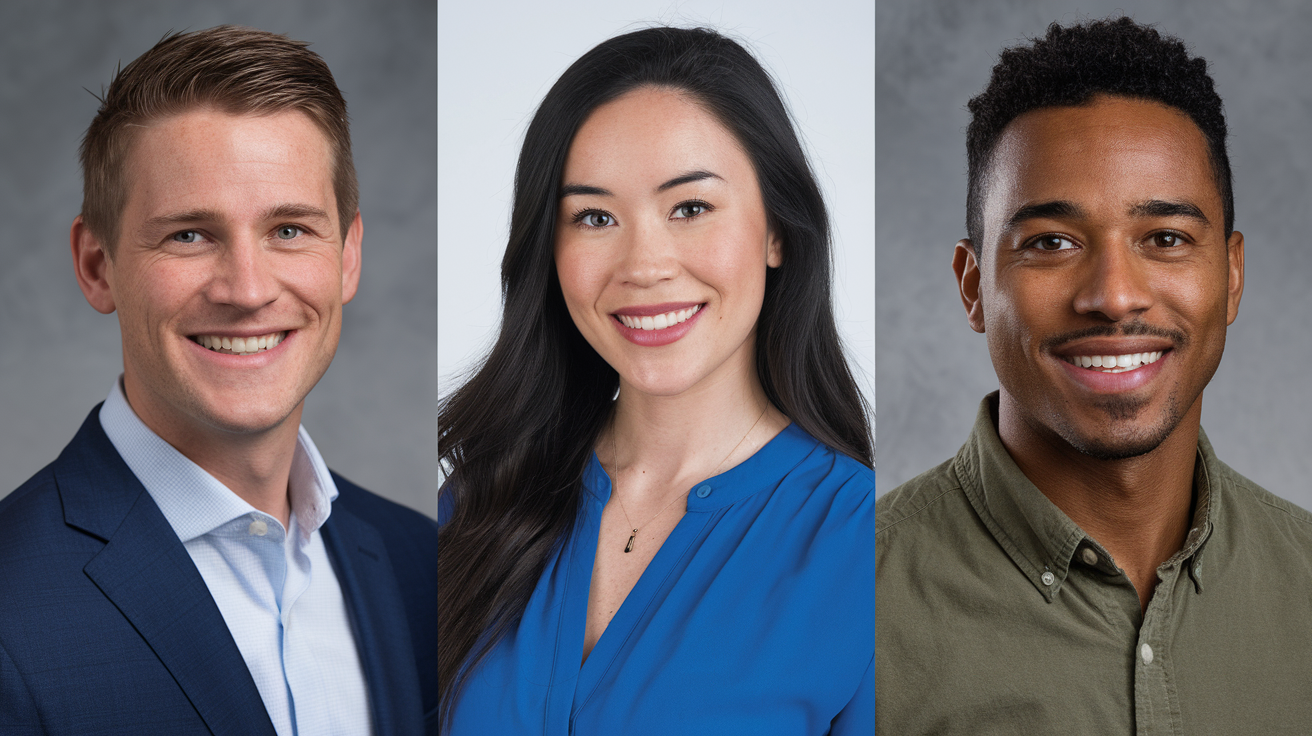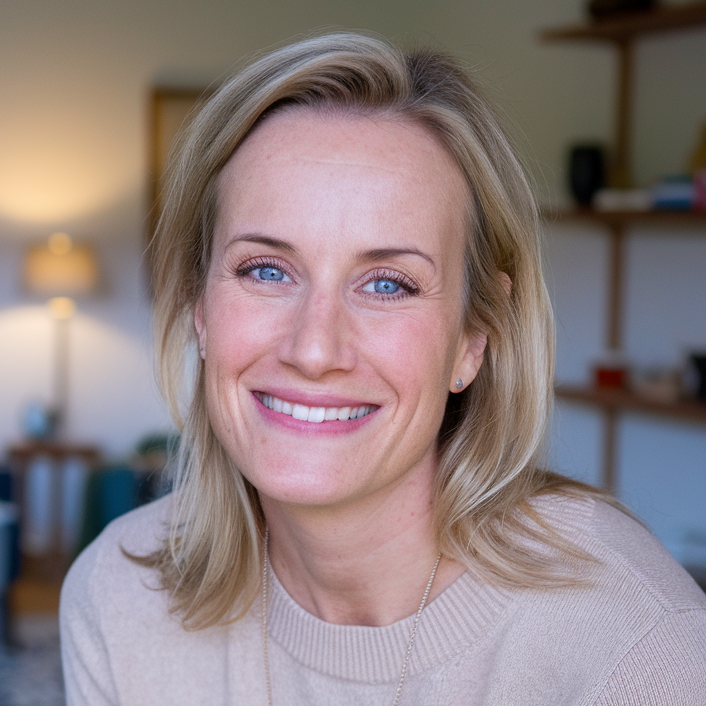
These headshots were entirely AI-generated by Dreamwave
What to Wear for Headshots: Your Complete Guide

By Sophia Keller
Headshot Photographer
April 18, 2025
When it comes to headshots, choosing the right outfit is crucial. After all, these photos often become the first impression people have of you—whether on social media, your company website, or even a conference badge. Below is a comprehensive, easy-to-follow guide that combines all the essential tips—from fit and color to style, accessories, and more.
The Basics
1. Timeless Basics
- Choose classic, well-fitted pieces like blazers, suit jackets, or simple blouses and button-up shirts. These never go out of style and tend to photograph well.
- Avoid overly trendy items that might look outdated within a year.
- Keep it polished but still let your personal style shine. If you’re typically laid-back, a crisp, tailored sweater might suit you better than a traditional blazer.
2. Fit Is Everything
- Wear clothing that fits well and allows you to move comfortably. Overly tight clothes can limit your range of motion, while baggy clothes can look messy.
- Avoid anything too loose or shapeless; it can be distracting and may make you look bigger on camera.
- Be sure to remove lint, hair, and wrinkles before the shoot. A quick pass with a lint roller and a steamer (or iron) can make all the difference.
Style & Appearance
3. Solid Colors and Contrast
- Stick to solid colors to keep the focus on your face. Busy patterns or large logos can distract from your expression.
- Consider classic business attire colors like navy, dark gray, and black. These are tried-and-true and convey professionalism.
- Jewel tones (like emerald green, burgundy, or sapphire) can also add a touch of color while still looking polished.
- Darker shades can be slimming, while brighter colors can help you stand out if that’s more your style.
- Think about your background—if it’s white or light-colored, a darker outfit will help you pop. If you’re unsure, bring multiple outfits.
4. Style and Structure
- Wear suit-inspired silhouettes (blazers, tailored jackets, fitted dress shirts) if you want a corporate or professional look.
- Choose a higher neckline (shallow V-neck, scoop, or bateau) to maintain a neat and sophisticated appearance.
- Avoid overly casual clothing such as T-shirts with logos or graphics, as they can diminish the professional vibe.
- Layering adds depth—a cardigan or a blazer can add dimension, and you can always remove a layer mid-shoot for variety.
- Bring multiple outfits so you can experiment during the session. You never know which combination will look best until you see it on camera.
5. Consider Your Industry and Personality
- Your outfit can reflect your personal brand. If you work in a creative field, you might choose bolder colors or slightly more relaxed silhouettes.
- If you’re in a conservative or corporate setting, a suit jacket or blazer with dress pants is typically a safe bet.
- Confidence is key. Choose clothes that make you feel comfortable and self-assured—that sense of ease will shine through in your photos.
Final Touches
6. Accessories: Keep It Simple
- Minimal jewelry is often best. A small necklace, subtle earrings, or a sleek watch can complete a look without overpowering it.
- Avoid anything overly flashy or reflective—it can draw the eye away from your face.
7. Hair and Makeup
- Aim for a natural but polished look. If you typically wear makeup, consider doing a test run to ensure it looks good on camera.
- Avoid heavy gloss or shimmer that could reflect studio lights.
- Make sure your hair is neat and well-styled. If you have facial hair, consider a trim to keep it tidy.
8. Avoid Shiny or Reflective Fabrics
- Satin, silk, and sequin-heavy fabrics can create glares or awkward reflections in photos.
- Stick to matte or lightly textured fabrics that absorb rather than reflect light.
Preparation & Mindset
9. Comfort = Confidence
- If you feel uncomfortable in your outfit, it will show on camera. Opt for clothing you can move in and feel relaxed wearing.
- Remember: when you feel great, you look great. Confidence is the best accessory.
- For tips on choosing the right setting for your photos, check out our guide to professional headshot backgrounds.
10. Final Preparations
- Plan ahead: Try everything on the night before, and have a backup outfit ready.
- Coordinate with your photographer: If you know what background you’ll be using, plan your colors and layers accordingly.
- Consider having a quick makeup or hair brush-up kit on hand, especially if you’re doing multiple looks.
In Closing
Putting together the perfect headshot outfit doesn’t have to be stressful. Focus on timeless, well-fitted pieces, choose colors and styles that work for your industry, and remember to keep it comfortable. With these pointers, you’ll walk into your headshot session looking (and feeling) sharp, confident, and ready to shine!